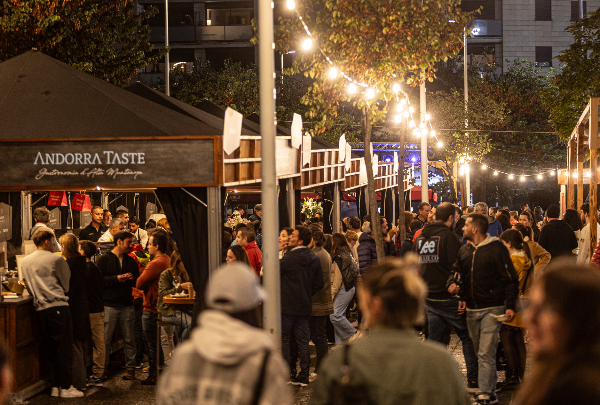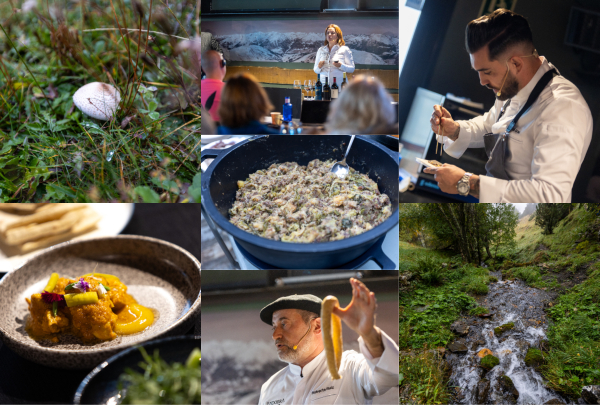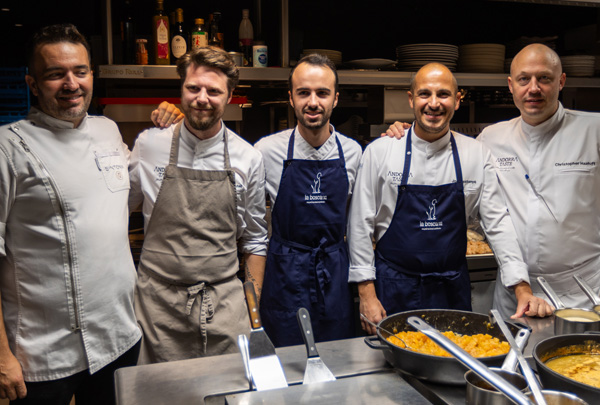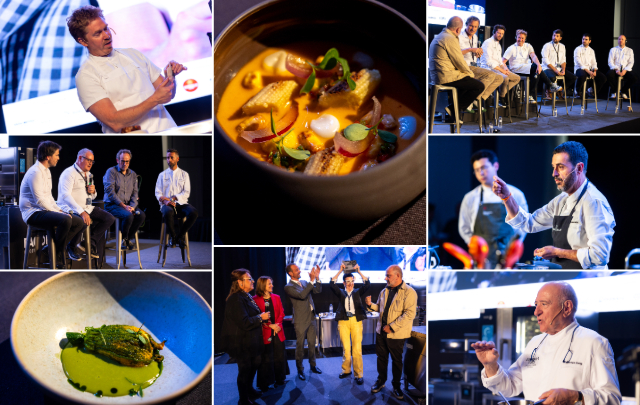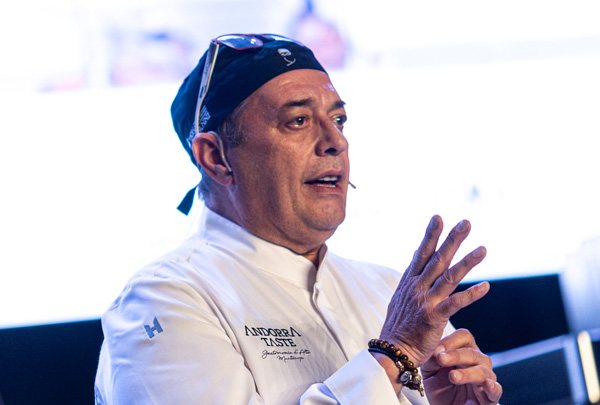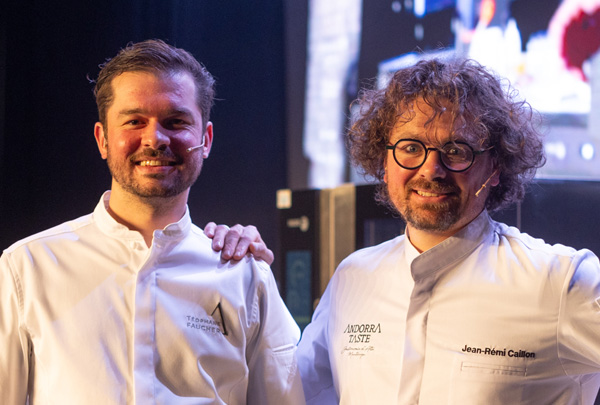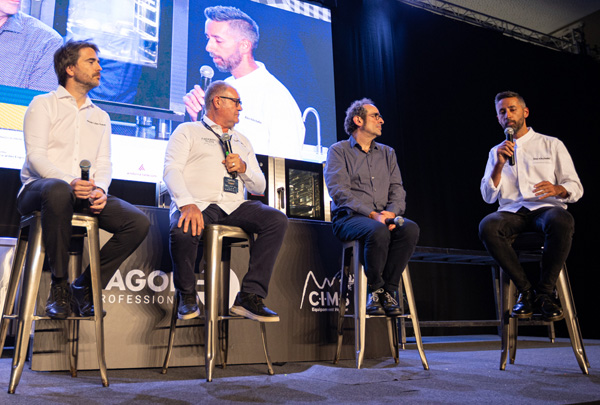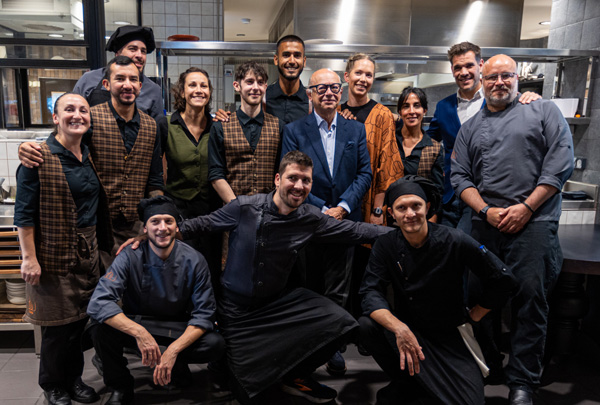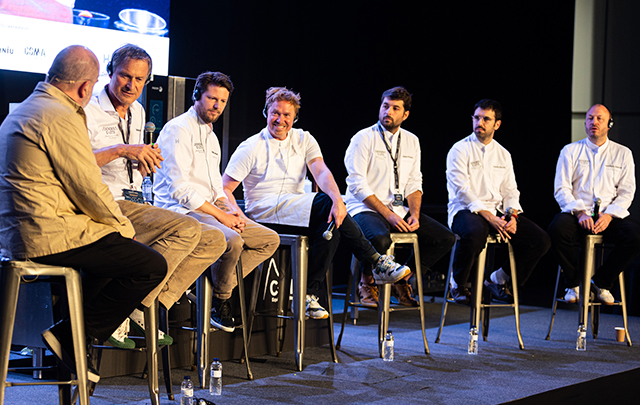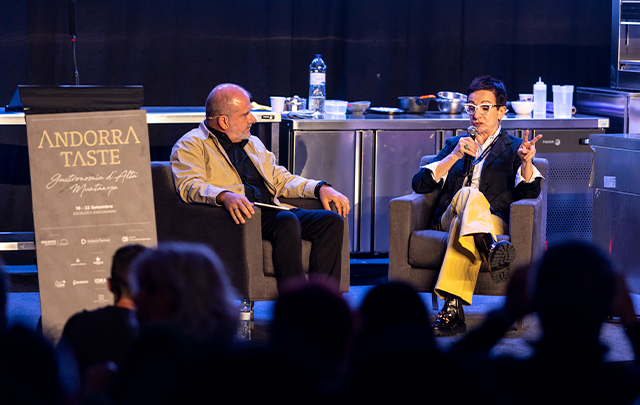News
Andorra Taste pays tribute to integral commitment to the territory, zero waste management and sustainability with meaning
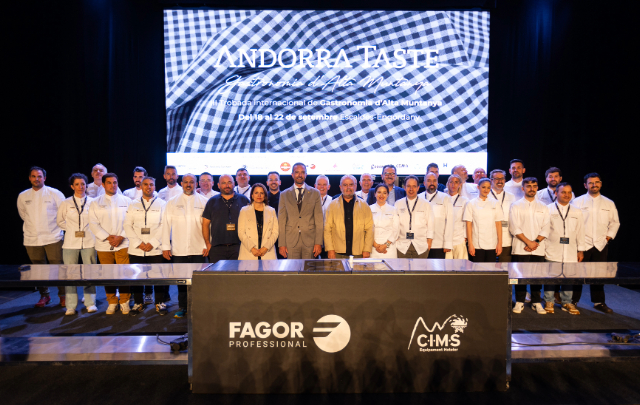
The more than 2,500 kilometres that separate Andorra from Norway did not seem so insurmountable on the first day of the third edition of Andorra Taste, the international meeting of high mountain gastronomy that is being held in Andorra from today until Friday. Difficult orographical conditions and a particular climate determine the way of life, agriculture and livestock farming, and therefore gastronomy. This has been demonstrated at Andorra Taste, in an edition in which the altitude-latitude binomial is the protagonist, allowing the twinning of territories that face similar challenges despite their geographical differences. The Norwegian chef Christopher Haatuft (Lysverket*, Bergen), the Swede Filip Gemzell, the team from the Finnish restaurant Nolla and Spanish chefs such as David Yárnoz (Molino de Urdániz**, Navarra), Elena Arzak (Arzak***, San Sebastián) and Eduardo Salanova (Canfranc Express*, Huesca) were on stage to illustrate this.
They were all invited to speak at a congress that, in the words of Jordi Torres Falcó, the Andorran Minister of Tourism and Trade, during the opening ceremony, "has become an essential event in the gastronomic calendar in just three editions". These words were echoed by Benjamín Lana, director of Vocento Gastronomía, who affirmed that "the seed we planted three years ago is germinating, giving life to a collective and exciting project such as the construction of a new Andorran cuisine that reflects both tradition and modernity". A new cuisine that, according to the Andorra Taste platform and Jordi Torres, "will allow us to project our identity to the world".
Nordic countries reflected in the mountains
Andorra reminds me of my region, the western part of Norway, although there is no sea or fjords here. This is how chef Christopher Haatuft (Lysverket*, Bergen) began his presentation at Andorra Taste. And he did so by highlighting the similarities between the two territories because, as he said, "the territory defines the cuisine of the place".
In this sense, the Norwegian chef explained all the conditioning factors that the Norwegian kitchen imposes on its traditional cuisine. Because of the orography, the fjords, only 4% of our land can be cultivated and we have to do it in steep areas and very close to the sea," explained Christopher, who added the problem of a meteorology that is basically an autumn with variations and a lot of rain, "which imposes a very short window for the production of vegetables that are basically harvested in June and July".
Haatuft explains that another problem with traditional Norwegian cuisine is that "there was no awareness of the need to produce good artisanal products", a situation that is being reversed thanks to a new generation of local producers.
One person who knows the importance of good produce - and knows it first hand - is chef Filip Gemzell, who is at the helm of ÄNG* restaurant (Tvååker, Sweden), a venue on the Ästad Gård farm where they work to the rhythm of the seasons and under the banner of sustainability. Everything that is cooked at Äng is grown on the farm and personally harvested by Filip and his team. Because of our changing seasons, we use what we grow in the summer to make preserves, pickles, fermented and smoked products that we can use all year round," explains the chef. Once again, it is clear that the chef has to adapt, something that, together with a good dose of creativity, can bear great fruit, such as the Michelin star that Gemzell will receive in 2021.
From the gastronomic temple of the fight against waste, the Finnish restaurant Nolla, came a masterclass at Andorra Taste on how "will is power". A will that is the key to achieving a goal that is not so difficult as to be impossible: to be a restaurant that does not produce any waste. Two of the partners of this Helsinki restaurant, Catalan Albert Franch and Portuguese Carlos Henriques, explained many of the processes they use at Nolla to make their restaurant sustainable. Not just in the kitchen, but in all the restaurant's processes. From the dining room, where dishes are served on second-hand crockery or cooked in a wood-fired oven without the use of electricity, thus avoiding energy consumption, to the team's uniforms, which are made from old hospital sheets.
For Nolla's partners, "it is not about solving the waste, but preventing it". This is why the ingredients used at Nolla come from a distance of 250 km around the restaurant, "out of respect for the place, to support the local economy and create links with local producers, thus guaranteeing a quality product," explains the Catalan, who lives in Finland. In addition, "the carbon footprint is minimised".
No packaging is used either. We don't accept products served in disposable packaging," explains Albert Franch, "we have to ask the producer, it depends on whether we work with them or not. These are just a few examples of a global, well thought-out approach that Nolla deliberately applies to each of the elements that make up the restaurant experience.
From the experience of other latitudes, Andorra Taste has also taken us to other altitudes. On the first day of this third edition, the congress once again visited the French Alps. Frédéric Molina, chef at Au Moulin de Léré (Vailly, France), was in charge of representing one of Europe's great mountain ranges and its cuisine in Andorra. The Frenchman stands out for his responsible farming and stockbreeding practices, which minimise the environmental impact of the restaurant and promote biodiversity.
The nearby mountains
After the Pyrenees, the congress took a closer look at the nearby cuisines. From the low mountains of the Basque Country to the valleys of Navarre, the high peaks of Aragon and even the narrow valleys of Andorra, the participants at the International High Mountain Gastronomy Meeting were able to grasp the common essence of culinary proposals based on local produce.
Elena Arzak (Arzak***, San Sebastian) reminded the participants that her city not only faces the sea, but is also surrounded by mountains. Without going any further, from the windows of her restaurant "you can see the imposing view of Mount Ulía". Out of respect for the landscape that surrounds them, Elena and her team wanted to focus their speech on sustainability. A practice that not only refers to the use of zero-waste techniques, but also, as the chef rightly pointed out, must include education: "I believe that schools should teach agriculture and cooking to instil respect for the environment in the new generations. If not, we will run out of seasons," she lamented.
And from the Basque Country to neighbouring Navarre with David Yárnoz, head chef at the two-star Molino de Urdániz. In Yárnoz's case, we saw once again that the landscape is intimately linked to the culinary offer, which in his case goes hand in hand with "connecting the diner with the essence of the cuisine, with the origin of the products, with quality products". It is a philosophy that he has managed to transfer thousands of kilometres away from his home town of Urdániz with the replica of his restaurant in Taipei (Taiwan). The key: the same as in Navarre. Understanding local products, exploring markets and looking for producers who can offer you the best products to create dishes that seek balance, flavour and emotion," confesses Yarnoz.
Another Pyrenean chef at the time was the Aragonese Eduardo Salanova, who in mid-2021 opened the doors of the Canfranc Express restaurant, located in a 1927 railway carriage in the converted railway station of Canfranc (Huesca), and in just five months obtained his second star, committing himself to a cuisine based on the recipes of the Aragonese valleys "because it is our identity". To prove it, he has brought along four of the most outstanding dishes from his Cambio de Vía menu, which aims to reposition the culinary heritage of the Canfranc valley using contemporary techniques.
The local accent on this first day of Andorra Taste was provided by chefs Alex Kinchella (La Cort del Popaire, Soldeu) and Rodrigo Martínez (Beç, Escaldes-Engordany). At La Cort del Popaire in Soldeu, at an altitude of 1,900 metres above sea level, Kinchella reinterprets local recipes to create 'typical mountain cuisine'. Martínez also offers his own version with influences from other cuisines.


